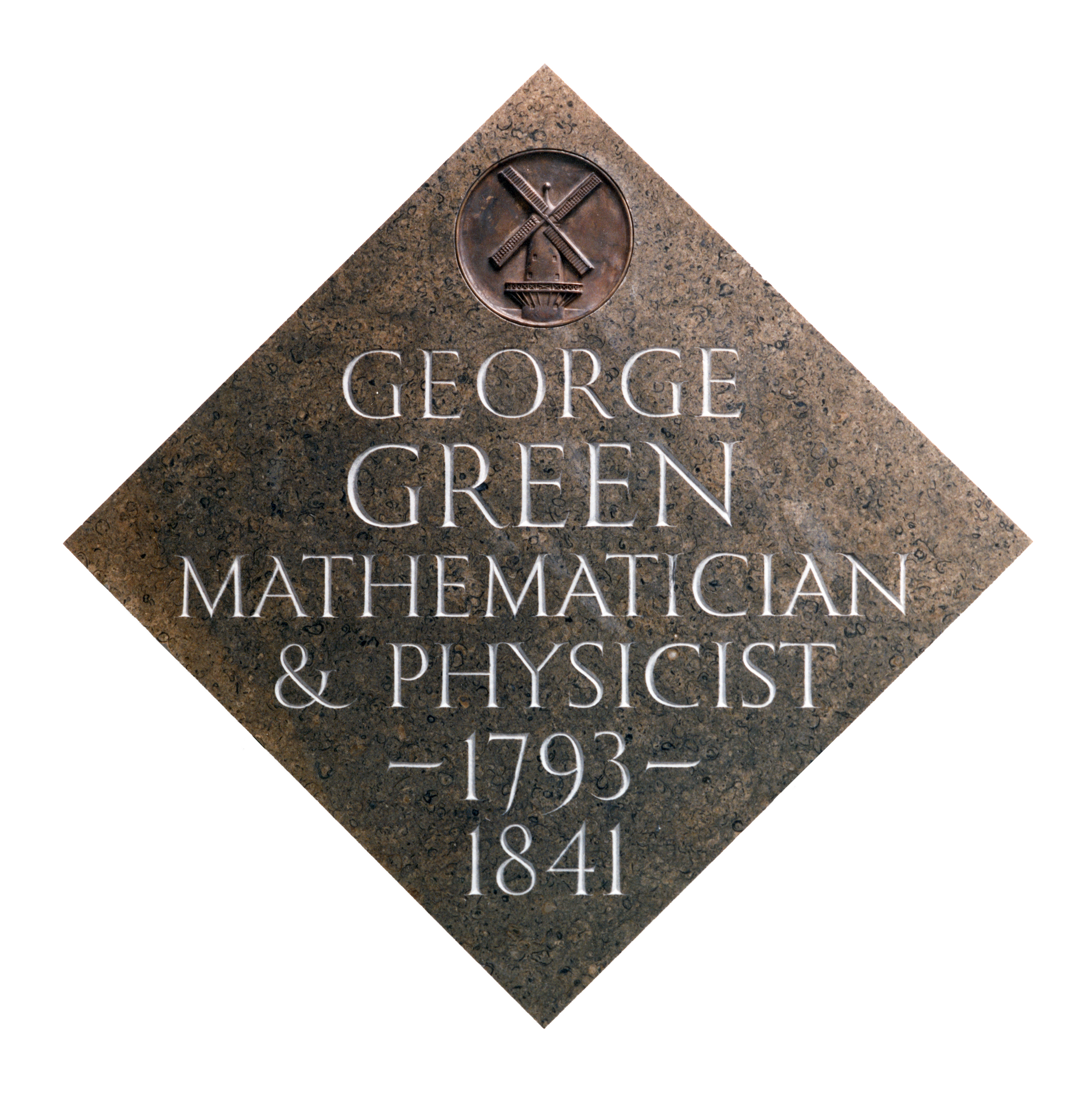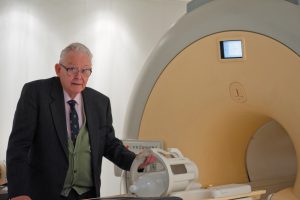
March 9, 2017, by Rob Ounsworth
Radar, MRI, quantum theory and more: how an enigmatic baker’s son influenced some of science’s greatest discoveries
 His Royal Highness The Prince Andrew is officially opening the George Green Library at University Park on Wednesday 15 March. So who was the remarkable yet enigmatic George Green?
His Royal Highness The Prince Andrew is officially opening the George Green Library at University Park on Wednesday 15 March. So who was the remarkable yet enigmatic George Green?
More than 175 years after his death in 1841, mathematical techniques invented by George Green are still widely used in physics and engineering. Green’s first essay, self-published in 1828, is considered one of the most important works ever written on electricity and the beginning of mathematical physics in England.
Yet Green, the son of a baker and mill owner in Sneinton, now part of Nottingham, is thought to have only received a year of formal schooling between the ages of eight and nine. How he was introduced to complex mathematics remains a mystery.
Died in obscurity
Green’s 1828 essay did help him win a place at Cambridge, in 1833, at the age of 40. After his graduation in 1837 Green stayed on at the faculty at Gonville and Caius College and wrote on optics, acoustics, and hydrodynamics. However, in 1840 he became ill and returned to Nottingham, where he died in obscurity the next year.
His Essay on the Applications of Mathematical Analysis to the Theories of Electricity and Magnetism lay forgotten until it was read six years after Green’s death by William Thomson, Lord Kelvin. In 1862, Carl Neumann’s paper on the stationary temperature of a homogenous body contained the first reference to “Green’s Function” in scientific literature.
Green’s Theorem and Green’s Functions enable the calculation of the response of a system to a sudden kick elsewhere and describe movement such as electricity, waves, flowing liquids or gases.
Green influenced discoveries unthinkable in his lifetime
Green’s work has supported discoveries in disciplines which would have been unthinkable in his own lifetime and have since been used in areas such as nuclear physics, quantum electrodynamics and superconductivity.
Professor Lawrie Challis of the School of Physics and Astronomy and a champion of Green, said: “Sixty years ago… the laws describing the way things moved were found to be totally untrue when they were studied on an atomic scale and new laws called quantum mechanics had to be introduced. Remarkably though Green’s techniques not only survived this revolution but if anything proved to be even more important in the new world than in the old.”
During the Second World War, radar scientist Professor Julian Schwinger used Green’s Functions to designing metal guides to direct radio waves. In 1945 Schwinger was appointed Associate Professor at Harvard University and realised that Green’s Functions could also be used in quantum field theory, looking at the movement of atoms and electrons. In 1965 Schwinger was awarded the Nobel Prize for Physics and received an honorary degrees from The University of Nottingham in 1993, as part of the George Green Bicentenary celebrations.
MRI and how George Green helped find a solution
The University of Nottingham physicist Sir Peter Mansfield, who won the Nobel Prize for medicine in 2003 for his pioneering work into Magnetic Resonance Imaging (MRI), was also indebted to Green. In the 1980s Mansfield worked on creating a medical scanner using a superconducting magnet and gradient coils. There was a problem: stray magnetic fields around the coils induce currents in the superconductor which would distort and blur the resulting image.
Sir Peter, pictured right, came up  with a solution of introducing a magnetic screen between the gradient coil and the inner bore of the static magnet. His colleagues Dr Robert Turner and Professor Roger Bowley, designed this screen and used Green’s Functions in their calculations to ensure there were no stray magnetic fields outside the screening coils to interfere with the clarity of the images.
with a solution of introducing a magnetic screen between the gradient coil and the inner bore of the static magnet. His colleagues Dr Robert Turner and Professor Roger Bowley, designed this screen and used Green’s Functions in their calculations to ensure there were no stray magnetic fields outside the screening coils to interfere with the clarity of the images.
George Green would have been awestruck at the notion that his ideas were applied in an imaging machine that was created in his home town and continues to help diagnosis and treat countless millions of patients across the world.
 As well as the George Green Library, this enigmatic genius is remembered at Green’s mill in Sneinton, a museum and science centre and restored 19th-century mill.
As well as the George Green Library, this enigmatic genius is remembered at Green’s mill in Sneinton, a museum and science centre and restored 19th-century mill.

A wonderful Library it is, i actually love studying at this facility,it has so much tranquil and friendly staff,the group and individual facilities are so fantastic.So happy yesterday had the chance to experience this remarkably milestone of its official opening by His Royal Highness,The Duke of York,Prince Andrew.
Green’s Windmill and Science Centre is well worth visiting as well. There are lots of hands-on exhibitions and interesting displays for children and adults of all ages to enjoy.
prof premraj pushpakaran writes — 2018 marks the 100th birth year of Richard Phillips Feynman!!!
prof premraj pushpakaran writes — 2018 marks the 100th birth year of Julian Seymour Schwinger!!!